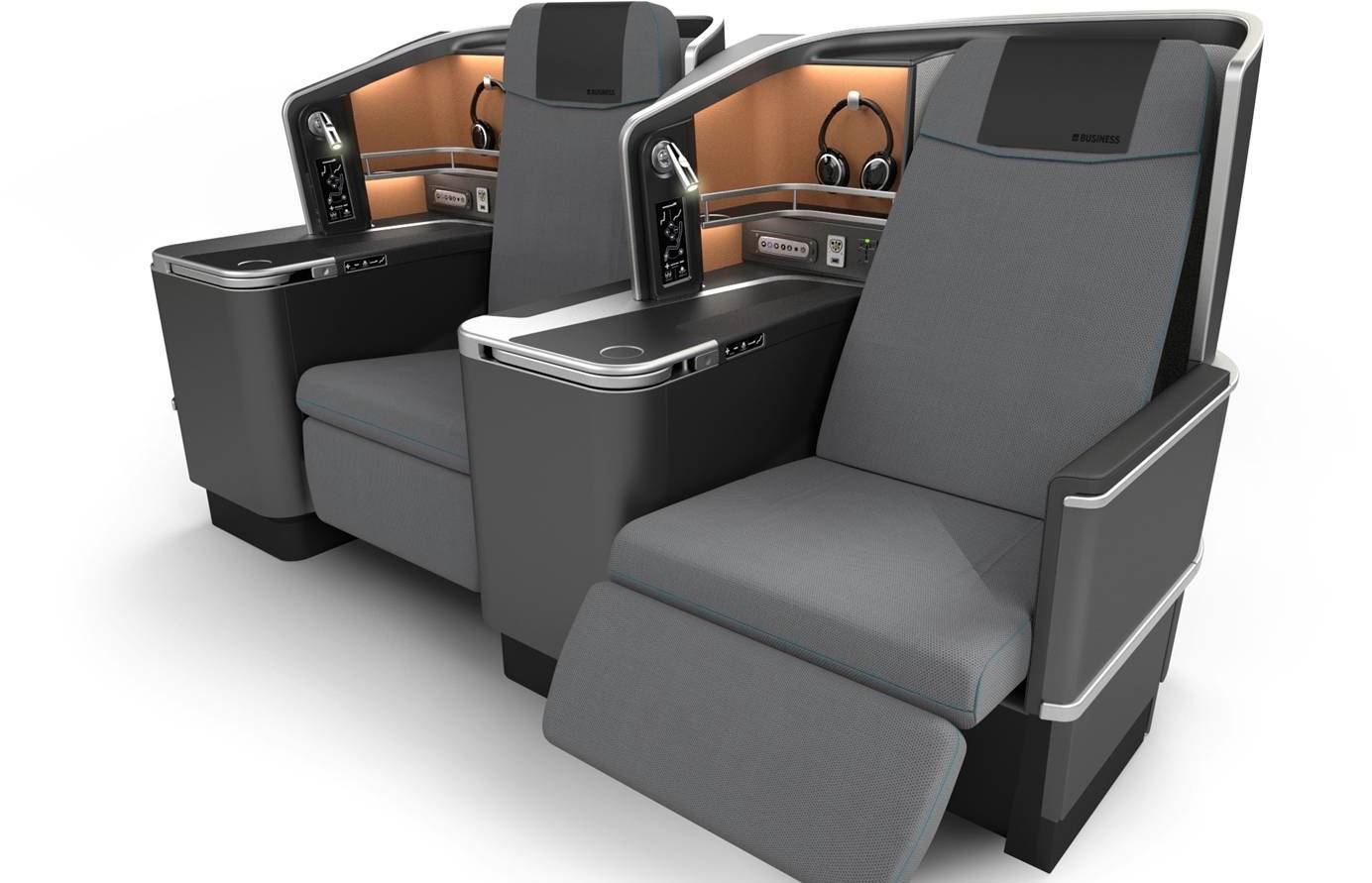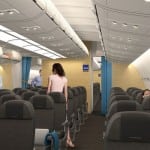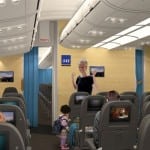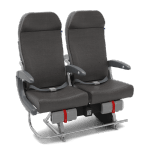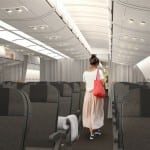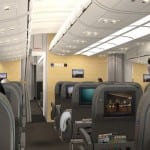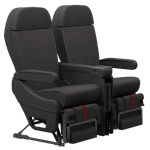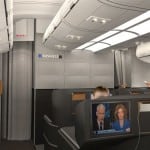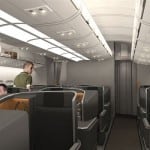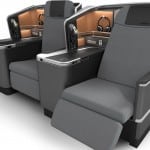Skift Take
Of course the Scandinavians would treat the current arms-race-in-the-sky as an opportunity to be reserved and smart rather than escalate.
- SAS’s economy “Go” cabin.
- SAS’s economy “Go” cabin.
- The new economy-class seat.
- SAS’s economy Plus cabin.
- SAS’s economy Plus cabin.
- The new economy-Plus-class seat.
- The business cabin.
- The business cabin.
- The new business-class seat.
SAS has made it clear that its principle strategy is to provide its customers with a convenient comfortable product which meets their every-day travel needs, without ostentation.
While other airlines debut programs fit for royalty, even Scandinavian royalty are known for relatively down-to-earth lifestyles and moderate living standards–by comparison to their peers. SAS’s prime focus is all business.
After a successful recovery from financial troubles, achieved through an efficient reorganization led by President and CEO Rickard Gustafson, the airline has no interest in abandoning its sound business strategy in pursuit of flash design. Their contribution to the aircraft interiors arms race is a hardened steel determination to ensure that passengers onboard their aircraft are well cared for and feel they have got good value for their hard-earned money.
That’s why its somber, no-nonsense interior is no surprise. Characterized by the choice of charcoal and graphite tones throughout; highlighted by SAS’s signature blue, this darker color choice is forgiving of everyday use, and ensures the cabin can remain current longer than many other color palates that have seen their debut this year.
Gustafson says of the new interiors upgrades for the Airbus A330/A340s: “The new interior is designed to meet the needs of frequent travelers.”
The numbers agree.
The Economy Class, SAS Go, is laid out eight-abreast in a 2-4-2 configuration with a 31”/32” Pitch. The airline has selected Zodiac Aerospace, France seats for their Go class cabin.
SAS Plus, the Premium Economy Class, is seven-abreast in a 2-3-2 configuration with a 37”/38” Pitch. These seats are supplied by Zodiac Aerospace, US.
SAS Business, at the front end, is arranged in a 1-2-1 configuration with direct aisle access for all passengers. It features fully-flat seats 196 cm long, with a massage function. These seats were developed by SAS in collaboration with Thompson Aero Seating in the UK, Northern Ireland. The bedding was developed in collaboration with Scandinavia’s luxury bedding company, Hästens of Sweden, established in 1852, and known by top interior designers the world over for their hand-crafted superior beds.
SAS have selected Zodiac Inflight Innovation for their IFE product with 9” HD Screens, shared power outlets between each pair of seats and a USB port in Go; 12” HD screens individual power outlets and USB port in Plus; and 15” HD screens with individual power outlets and USB port in Business.
SAS has also announced that they will offer Wi-Fi services on all of these aircraft, powered by Panasonic’s Global Communications Services. The airline has indicated that it is still undecided on whether these Wi-Fi connections will be fee-based or free, and will reveal those details, along with the specific IFE content selection and cabin services and soft products to be introduced, closer to the launch date in early 2015.
Kristine Mayer, Manager SAS Service design, says of their design objectives for this new program:
”Our objective was to find cabin elements which meet what our target group of frequent flyers need in the air, ensuring the right feeling throughout the journey.”
The recurring theme of the hotel-in-the-sky concept, which is so often on the lips of airline brand managers these days, appears again in our conversation with Mayer about this program. Mayer, however shares SAS’s vision for a hotel-in-the-sky as one more grounded in the travel experience of the majority of passengers, saying:
“We wanted the three cabins to have the hotel feeling, with a standard room, a premium room option, and a superior room, but also considering what environments the frequent flyers live in–giving them the joyful feeling, like coming home.”
Mayer and her team worked with the Scandinavian design firm Blink, based in Stockholm, on this program. Mayer herself is a trained Industrial designer, and worked with industrial design at different consulting firms for five years prior to joining SAS in 2010.
Of the strong color scheme selected for this cabin, she tells Skift:
“We have the vivid blue color used for clear navigation on ground which characterizes our signage and check in areas. We use a more sober color base in our lounges and onboard to provide a familiar nice welcome and quality feeling. All designed to meet our customers’ needs in the different touchpoints.”
But Mayer also emphasizes durability and relevance for a long service life, with the aim of designing a timeless cabin.
As Mayer says, this design meets the expectations of their passengers through “Good and Smart solutions for frequent Scandinavian passengers.”
The design may be stark and utilitarian, but it is also smart, by the traditional Scandinavian definition of the word. This definition encompasses an inherent cleverness and shrewdness. It reflects ingenuity, a wise application of resources, and frugality; not based on meanness, but rather on getting the best quality product at good value. Smart also means chic and stylish, but eschews extreme lavishness or the flaunting of wealth.
Mayer puts it best when she says: “Scandinavian design values are equality, functionality, and modernity.”
With these standards in mind, the SAS new cabin product is a very successful one, and likely to appeal not only to passengers of Scandinavian origin, but also to savvy international passengers who share common values. As Mayer points out: “The Scandinavian design ideal appeals universally.”
SAS plans to have installed this new design on the majority of their long haul fleet by 2016.
The Star Alliance Member airline will renew its entire long haul fleet in the next few years; with a cabin upgrade on seven Airbus A330/A340s. Four new Airbus A330-300s are scheduled for delivery in 2015 and 2016, as well as eight Airbus A350-900s to be delivered starting 2018. SAS has an option on an additional six A350-900s.
SAS flies long haul routes to New York, Chicago, San Francisco, Beijing, Shanghai, Tokyo and will begin service to Houston in August of this year.
Marisa Garcia has worked in aviation since 1994, spending 16 years on the design and manufacturing of cabin interiors and cabin safety equipment. She shares insights gained from this experience on Flight Chic and Tweets as @designerjet.
The Daily Newsletter
Our daily coverage of the global travel industry. Written by editors and analysts from across Skift’s brands.
Have a confidential tip for Skift? Get in touch
Tags: amenities, in-flight, sas
Photo credit: The new business-class seat on SAS. SAS Airways
